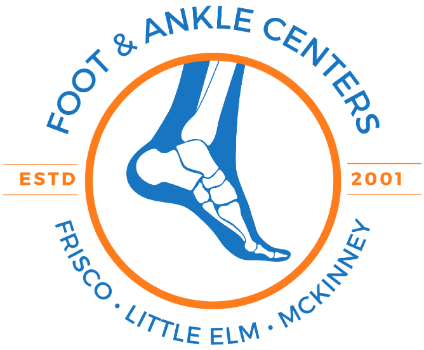Plantar Fasciitis
Most cases of heel pain are caused by plantar fasciitis, a condition that affects the tissues in the bottom of your foot. If you suffer from heel pain, our foot health experts at Foot & Ankle Centers of Frisco, Little Elm, & McKinney can determine the most effective treatment for you. Led by board-certified podiatrists, our practice uses the latest advances to accurately diagnose and treat a wide range of foot and ankle problems.

Who Is At Risk For Plantar Fasciitis?
A number of factors can increase your risk of developing plantar fasciitis, including:
- Age- Plantar fasciitis most commonly affects people around the ages of forty to sixty due to the natural wear on the body.
- Obesity- Excess body weight will put extra stress on the plantar fascia.
- Foot structure- People with flat feet or high arches are at a higher risk.
- If you are an athlete or have an active lifestyle- Many athletes and runners tend to develop plantar fasciitis, especially people who frequently run or play sports like soccer. Repetitive movements on the foot can cause the plantar fascia to become worn down and develop tears.
Preventing plantar fasciitis can be difficult, but there are several steps you can take to reduce your risk. These include wearing supportive shoes that fit properly, maintaining a healthy weight, and avoiding activities that involve repetitive foot movements.
In some cases, plantar fasciitis has developed with no clear cause, which is why it is important to see one of our specialists at Foot & Ankle Centers of Frisco, Little Elm, & McKinney to ensure a proper diagnosis and determine the most effective treatment plan for your heel pain.


